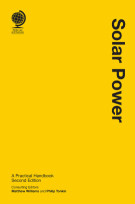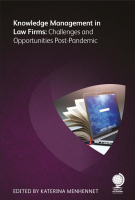SMEs and Insolvency: Towards a New Approach in Asia
26 September 2017

Author bio coming soon
In our latest blog, Paul Omar, Technical Research Coordinator, INSOL Europe, discusses efficient and effective restructurings of MSME businesses facing financial distress in Asia.
Small business is undoubtedly the lifeblood of economies, more so where those economies are emerging and developing. The promotion and nurturing of entrepreneurship is a key factor in economic success, not just for those entrepreneurs, but for the wider society, which, as stakeholders, benefits from the generation and distribution of wealth through economic and social policy. One unresolved question, however, is how to treat MSMEs (micro-, small- and medium-enterprises) in insolvency. This has become a concern for the international institutions, particularly the World Bank, as witness the focus of the agenda at the Insolvency and Creditor/Debtor Regimes (ICR) Task Force Meeting in November 2015. The experts present at the meeting discussed the potential to reduce formality, the streamlining of procedures and the introduction of alternative remedies to lengthy court-based insolvency procedures as helpful in order to promote more efficient and effective restructurings of businesses facing financial distress.
In Asia, the general response to the needs of MSMEs in situations of economic and financial difficulties appears to be to create abridged and/or fast-tracked variants of existing procedures to apply to debtors. With the qualification usually being related to business size and/or debts below a particular threshold, such variants end up covering entrepreneurs and businesses mostly falling within the MSME classification. In some cases, however, the dissimilarities between the “standard” and “simplified” regimes may be so significant as to effectively constitute a different regime. As an alternative, in some countries, procedures may be created expressly to apply to either certain types of debtor or to all debtors below a particular threshold, with the consequence that a special regime focused on MSMEs exists in that jurisdiction.
As an example of both approaches co-existing in the same legislation, the Indian Insolvency and Bankruptcy Code 2016 takes the view that fast-tracking procedures for corporate debtors below a threshold is the right solution. Under the rules in sections 55-58 of the Code, the “Insolvency Resolution Process” is generally subject to tighter deadlines and the general framework is only applicable to the extent the context requires. Although insolvency resolution is also available for individuals and partnerships, no fast-track option has been introduced for them, the legislative framework providing instead in section 80 onwards for a separate “Fresh Start Process” for debts below a threshold to be determined. Furthermore, both fresh start and insolvency resolution procedures for individuals and partnerships will now fall under the jurisdiction of a specialist Debt Recovery Tribunal governed by sections 179-180, the intention being that this should considerably simplify and reduce the length of procedures.
In South Korea, the fusion of two regimes for small- and medium- enterprises in the Debtor Rehabilitation and Bankruptcy Law 2006 has led to a debtor-in-possession framework that applies to individuals and corporate debtors of all sizes, a recent example of its use being the Hanjin Shipping case (see Re Taisoo Suk (as foreign representative of Hanjin Shipping Co Ltd) [2016] SGHC 195). However, recent changes introduced by Act 12892 of 30 December 2014 have set up a “Simplified Rehabilitation Procedure” for “small operating income earners” governed by new Articles 293-2 to 293-8. Although the general provisions of the standard procedure apply, significant differences exist in terms of a custodian not being appointed to supervise the debtor, reduced inspection requirements and a relaxation in the voting framework for the adoption of a rehabilitation plan. In Japan, a similar approach sees the Civil Rehabilitation Act 1999 (Act 225 of 22 December 1999) framework provide a “Small Case Procedure”, which benefits mostly consumers and smaller business proprietors. In this procedure, a “individual rehabilitation commissioner” is appointed under a relaxed procedural regime in Articles 223-231, which, nonetheless, requires adherence to a minimum repayment plan to be agreed prior to approval by a court.
What these examples all have in common is the willingness to see MSMEs as a discrete category requiring specialist approaches and/or procedures to deal with the insolvency threats facing them. However, two problems may still pose obstacles to the holistic treatment of MSME issues. The first, as may be seen in India, is the classification of debtors, a common distinction being made between corporate debtors and others (sole proprietors/partnerships). This is even though similarly crafted procedures may apply to both types of debtor, especially where an effort is made for the concertation of reforms, often by the creation of a single piece of insolvency legislation. Otherwise, this divide may translate into separate reform processes, sometimes undertaken by different Government agencies in charge of corporate or general entrepreneurial policy. An example is Malaysia, where the Companies Act 2016 (Act 777), introducing two new rescue procedures due to come into force in 2018, has overtaken reforms to personal insolvency in the legislative process.
The second problem is the difficult place of consumer insolvency. The historic focus of insolvency legislation has been on dealing with the problems of business, whether run in corporate form or by some means of partnership or sole proprietorship. The reality is more nuanced, given that many MSMEs tend to obtain funding from a wide range of sources, including finance taken out in a personal capacity, particularly where the business does not yet have a sufficient trading history to be able to approach conventional financing sources. Some legislative frameworks, such as in Japan and South Korea, do not appear to distinguish between categories of debtor, thus enabling access to procedures, which may benefit a variety of MSMEs. However, other systems do distinguish and, in many cases, have yet to address the problems of consumer debt in a comprehensive manner. This leads to an unequal treatment of personal and business debt that may disadvantage debtors looking for a fresh start.
In summary, MSME insolvency frameworks are still in the process of evolution. Much has happened in Asia, as illustrated by the above examples, to improve the workings of insolvency and restructuring processes to better cater for the needs of MSMEs. The place that MSME policy now has on the agenda should ensure it continues to be the subject of future attention within reforms being carried out in jurisdictions in Asia and elsewhere.
NB. This blog piece is based on a talk given at the Africa Roundtable Meeting in Ghana on 6-7 October 2016. Views expressed here are in a personal capacity.













Any comments - send us an email